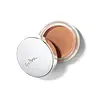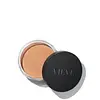What's inside
What's inside
 Key Ingredients
Key Ingredients

 Benefits
Benefits

 Concerns
Concerns

 Ingredients Side-by-side
Ingredients Side-by-side

Propylheptyl Caprylate
EmollientIsoamyl Laurate
EmollientEthylhexyl Palmitate
EmollientOctyldodecanol
EmollientSilica
AbrasiveMica
Cosmetic ColorantCopernicia Cerifera Cera
EmollientC18-36 Acid Triglyceride
EmollientLauroyl Lysine
Skin ConditioningBis-Diglyceryl Polyacyladipate-2
EmollientSynthetic Beeswax
Emulsion StabilisingDicalcium Phosphate
AbrasiveDisteardimonium Hectorite
StabilisingButyrospermum Parkii Butter
Skin ConditioningTheobroma Cacao Seed Butter
EmollientTocopherol
AntioxidantPropylene Carbonate
SolventPentaerythrityl Tetra-Di-T-Butyl Hydroxyhydrocinnamate
AntioxidantSynthetic Wax
AbrasiveCI 77492
Cosmetic ColorantCI 77491
Cosmetic ColorantCI 77499
Cosmetic ColorantCI 77947
CI 42090
Cosmetic ColorantPropylheptyl Caprylate, Isoamyl Laurate, Ethylhexyl Palmitate, Octyldodecanol, Silica, Mica, Copernicia Cerifera Cera, C18-36 Acid Triglyceride, Lauroyl Lysine, Bis-Diglyceryl Polyacyladipate-2, Synthetic Beeswax, Dicalcium Phosphate, Disteardimonium Hectorite, Butyrospermum Parkii Butter, Theobroma Cacao Seed Butter, Tocopherol, Propylene Carbonate, Pentaerythrityl Tetra-Di-T-Butyl Hydroxyhydrocinnamate, Synthetic Wax, CI 77492, CI 77491, CI 77499, CI 77947, CI 42090
Octyldodecanol
EmollientC15-19 Alkane
SolventBis-Diglyceryl Polyacyladipate-2
EmollientTribehenin
EmollientSilica
AbrasiveMica
Cosmetic ColorantSynthetic Wax
AbrasiveJojoba Esters
EmollientDisteardimonium Hectorite
StabilisingPersea Gratissima Oil
Skin ConditioningHelianthus Annuus Seed Oil
EmollientTocopherol
AntioxidantBeta-Sitosterol
Emulsion StabilisingSqualene
EmollientDecylene Glycol
Skin Conditioning1,2-Hexanediol
Skin ConditioningCaprylyl Glycol
EmollientParfum
MaskingCI 77891
Cosmetic ColorantIron Oxides
CI 42090
Cosmetic ColorantOctyldodecanol, C15-19 Alkane, Bis-Diglyceryl Polyacyladipate-2, Tribehenin, Silica, Mica, Synthetic Wax, Jojoba Esters, Disteardimonium Hectorite, Persea Gratissima Oil, Helianthus Annuus Seed Oil, Tocopherol, Beta-Sitosterol, Squalene, Decylene Glycol, 1,2-Hexanediol, Caprylyl Glycol, Parfum, CI 77891, Iron Oxides, CI 42090
Ingredients Explained
These ingredients are found in both products.
Ingredients higher up in an ingredient list are typically present in a larger amount.
This ingredient is lipid-based synthetic skin-conditioning agent derived from adipic acid and a mixture of fatty acids. It is often called a lanolin substitute.
As an emollient, it helps soften and hydrate the skin. Emollients create a barrier on the skin to trap moisture in.
Due to its fatty acid base, it may not be Malassezia folliculitis safe.
Learn more about Bis-Diglyceryl Polyacyladipate-2Ci 42090 is a synthetic dye created from petroleum. It is used to give a bright blue color to cosmetics, medicine, and food.
Disteardimonium Hectorite comes from the clay mineral named hectorite. It is used to add thickness to a product.
It can also help stabilize a product by helping to disperse other ingredients.
Hectorite is a rare, white clay mineral.
Learn more about Disteardimonium HectoriteMica is a naturally occurring mineral used to add shimmer and color in cosmetics. It can also help improve the texture of a product or give it an opaque, white/silver color.
Serecite is the name for very fine but ragged grains of mica.
This ingredient is often coated with metal oxides like titanium dioxide. Trace amounts of heavy metals may be found in mica, but these metals are not harmful in our personal products.
Mica has been used since prehistoric times throughout the world. Ancient Egyptian, Indian, Greek, Roman, Aztec, and Chinese civilizations have used mica.
Learn more about MicaOctyldodecanol is a fatty alcohol. It is primarily used to enhance the texture of products.
As an emulsifier, Octyldodecanol helps prevent the oils and waters from separating. It also prevents ingredients from creating foam when shaken.
Octyldodecanol is created by reducing fatty acid to an alcohol.
Due to its high molecular weight, it does not get absorbed into the skin.
Learn more about OctyldodecanolSilica, also known as silicon dioxide, is a naturally occurring mineral. It is used as a fine, spherical, and porous powder in cosmetics.
Though it has exfoliant properties, the function of silica varies depending on the product.
The unique structure of silica enhances the spreadability and adds smoothness, making it a great texture enhancer.
It is also used as an active carrier, emulsifier, and mattifier due to its ability to absorb excess oil.
In some products, tiny microneedles called spicules are made from silica or hydrolyzed sponge. When you rub them in, they lightly polish away dead skin layers and enhance the penetration of active ingredients.
Learn more about SilicaSynthetic Wax is created from fossil fuels such as natural gas. It is used to enhance texture, adjust pH, and as an occlusive.
It may also be used as an abrasive ingredient to exfoliate the skin.
Synthetic Wax may not be fungal acne safe.
Learn more about Synthetic WaxTocopherol (also known as Vitamin E) is a common antioxidant used to help protect the skin from free-radicals and strengthen the skin barrier. It's also fat soluble - this means our skin is great at absorbing it.
Vitamin E also helps keep your natural skin lipids healthy. Your lipid skin barrier naturally consists of lipids, ceramides, and fatty acids. Vitamin E offers extra protection for your skin’s lipid barrier, keeping your skin healthy and nourished.
Another benefit is a bit of UV protection. Vitamin E helps reduce the damage caused by UVB rays. (It should not replace your sunscreen). Combining it with Vitamin C can decrease sunburned cells and hyperpigmentation after UV exposure.
You might have noticed Vitamin E + C often paired together. This is because it is great at stabilizing Vitamin C. Using the two together helps increase the effectiveness of both ingredients.
There are often claims that Vitamin E can reduce/prevent scarring, but these claims haven't been confirmed by scientific research.
Learn more about Tocopherol